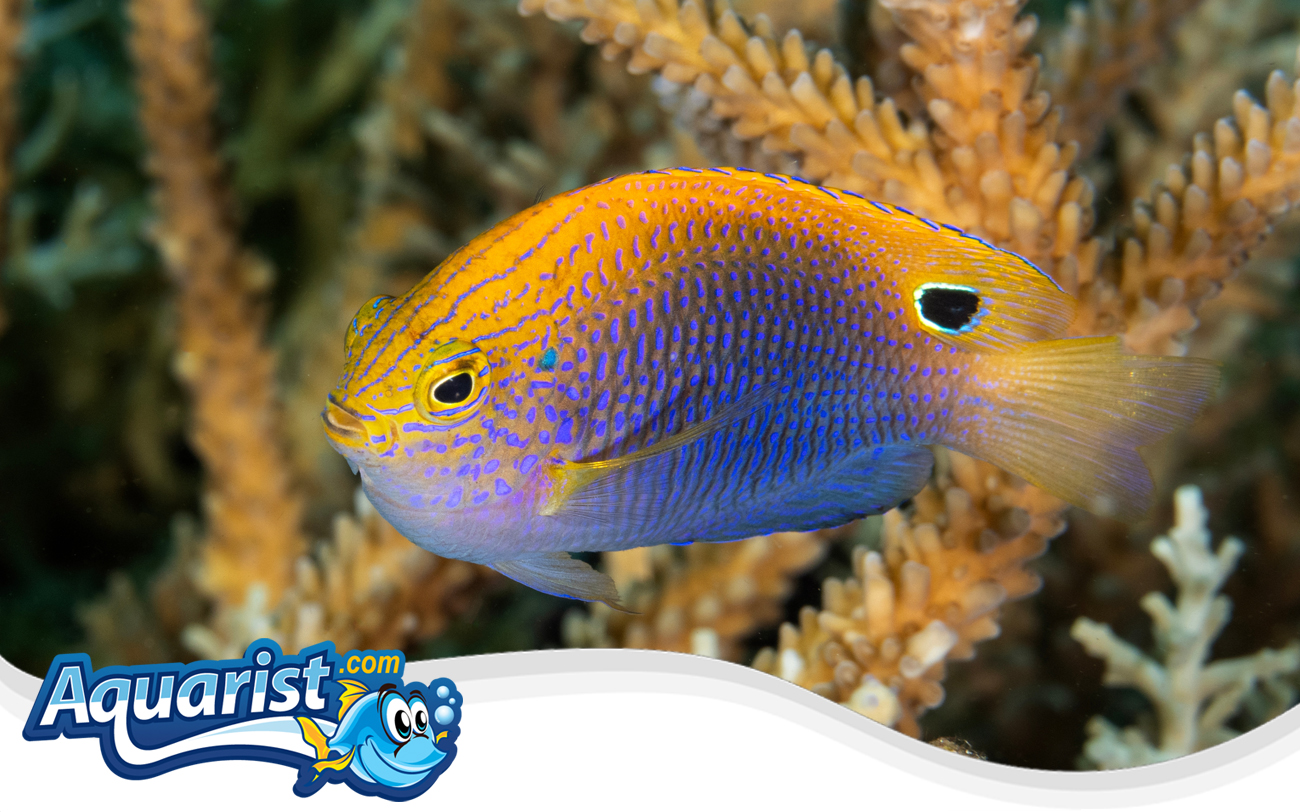Overview
- Native to the Indo-Pacific, commonly found in coral-rich lagoons and outer reef slopes.
- Small, vibrant fish with a striking combination of electric blue and purple hues, often with subtle spots or lines on the body.
- Hardy and active, making it a popular choice for beginner to intermediate aquarists.
- Can be territorial, especially in smaller tanks or when kept with more docile species.
Feeding
- Omnivorous; naturally consumes algae, plankton, and small invertebrates.
- Readily accepts marine flakes, pellets, mysis shrimp, brine shrimp, and spirulina-based foods.
- Feed 2–3 times daily to support vibrant coloration and activity levels.
- A varied diet helps ensure proper nutrition and overall health.
Habitat
- Suitable for aquariums 30 gallons or larger, with plenty of rockwork and coral structures.
- Enjoys areas with hiding places, caves, and branching corals for refuge.
- Stable water parameters and good water quality are essential.
- Moderate water flow and efficient filtration recommended for optimal conditions.
Fish Care
- Ideal water temperature: 74–80°F (23–27°C).
- pH level: 8.1–8.4; specific gravity: 1.020–1.025.
- Hardy, but regular maintenance and water changes are necessary to avoid stress-related illness.
- Quarantine new arrivals to prevent disease introduction into the display tank.
Compatibility
- Semi-aggressive; can be territorial, especially in confined environments.
- Reef-safe; does not typically harm corals or invertebrates.
- Best kept with other semi-aggressive fish or in species-only tanks for minimal conflict.
- Avoid housing with very passive species or much larger aggressive fish.
Aquarium Behavior
- Highly active swimmer and often seen darting in and out of rockwork or coral heads.
- May stake out a territory, especially during feeding or when threatened.
- Interactive and responsive to aquarists, particularly during feeding time.
- Providing a well-structured aquascape helps promote natural behavior and reduce aggression.


